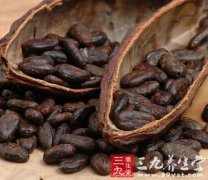How coffee is sown and harvested
Seeds, not beans.
In fact, coffee beans are seeds of red-skinned coffee cherries that look like ripe cherries. Each fruit usually contains two seeds, which must be removed and dried to produce two "green coffee" beans that are later roasted.
The endocarp wrapped coffee seed to the seedbed, 40-60 days will germinate, about 6 months after germination will grow to about 50 cm seedlings. At this stage, the seedlings are still fragile and must be covered with something such as winter gauze to block direct sunlight.
The seedlings bloom about three years after they are transplanted from the seedbed to the garden. During this period, countries such as Central America that harvest coffee beans by hand prune the branches of the coffee tree and trim the lower branches to improve the efficiency of harvesting coffee beans. Coffee tree flowers are white five-petaled flowers, jasmine fragrance, flowers will wither within a few days, followed by small fruit growth, 6-8 months to represent mature red.
The coffee harvest peaks 6-10 years after the coffee tree is grown, and then the harvest gradually declines. In addition, if the coffee tree grows too tall, it will also cause poor harvests, so coffee farmers will cut the trunk from 30-50 cm above the ground, allowing it to regenerate branches and renew productivity. This step is called Cutback. If combined with favorable conditions such as climate, fertilization and pest resistance, coffee trees can last for 20 years or even 50 years.
Wild coffee trees can be as high as 10 meters, but generally planted coffee trees are maintained at a height of about 2 meters in order to facilitate harvesting. Arabica coffee varieties are improved every year to achieve high yield, high disease resistance, early harvest, environmental adaptability standards, of course, coupled with the right height of the tree to harvest more efficiently.
recovery
Coffee harvesting time and harvesting methods vary from place to place, generally speaking, about 1-2 times a year (sometimes up to three or four times). Harvest time is mostly in dry season. Brazil, for example, begins harvesting in the north-eastern state of Bahia around June and ends harvesting in the southern state of Parana around October. The harvest period in Central America is from September to January, from lowland to highland.
Harvesting methods can be divided into two categories, one is hand-picking method, the other is shaking method.
(1)hand-picking method
With the exception of Brazil and Ethiopia, most Arabica coffee-producing countries harvest by hand. Hand picking method is not only mature red coffee can be picked, sometimes together with immature green coffee beans and branches picked together, so these immature beans are often mixed with refined coffee beans, especially when refined by natural drying method. If these beans are baked together, they will produce a disgusting odor.
(2)shaking method
This method is to beat the ripe fruit with a random stick or shake the coffee branch, so that the fruit falls into a pile. Large farms use large harvesters, while small and medium-sized farms use the whole family to mobilize people to harvest. This method of shaking the fruit to the ground is more likely to mix impurities and defective beans than the hand-picked method. Some beans from some places will also be stained with strange odors or the beans will ferment because the ground is wet. Countries producing Robusta beans, such as Brazil and Ethiopia, harvest them in this way.
In countries where the shaking method is used, coffee beans are also refined by natural drying. Coffee blossoms in spring, bears fruit in summer and harvests in winter. Therefore, it is very difficult to harvest and dry in places where the distinction between dry and rainy seasons is not obvious. In rainy season, natural drying method cannot be adopted. Therefore, coffee is suitable for growing in areas with early and clear rainy seasons.
Important Notice :
前街咖啡 FrontStreet Coffee has moved to new addredd:
FrontStreet Coffee Address: 315,Donghua East Road,GuangZhou
Tel:020 38364473
- Prev

Take stock of the global origin of high-quality coffee beans (3)
A few steps to buy coffee beans fresh is the most important factor in buying coffee beans. There are several steps to judge whether the beans are fresh or not: 1. Grab a handful of coffee beans and feel whether they are solid beans with the palm of your hand. 2. Whether it is enough to smell the aroma close to the nose. 3. Put a bean into your mouth and bite it twice. There is a clear sound indicating that the bean is well preserved and not damp. If
- Next

Costa Rica Doka Estate Coffee Estate
Coffee is Costa Rica's golden bean, which once completely changed this originally poor and backward colonial country. After independence, Colombia enacted laws allowing ordinary citizens to grow coffee, laying the foundation for a predominantly middle-class society.
Related
- Beginners will see the "Coffee pull flower" guide!
- What is the difference between ice blog purified milk and ordinary milk coffee?
- Why is the Philippines the largest producer of crops in Liberia?
- For coffee extraction, should the fine powder be retained?
- How does extracted espresso fill pressed powder? How much strength does it take to press the powder?
- How to make jasmine cold extract coffee? Is the jasmine + latte good?
- Will this little toy really make the coffee taste better? How does Lily Drip affect coffee extraction?
- Will the action of slapping the filter cup also affect coffee extraction?
- What's the difference between powder-to-water ratio and powder-to-liquid ratio?
- What is the Ethiopian local species? What does it have to do with Heirloom native species?

